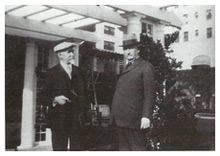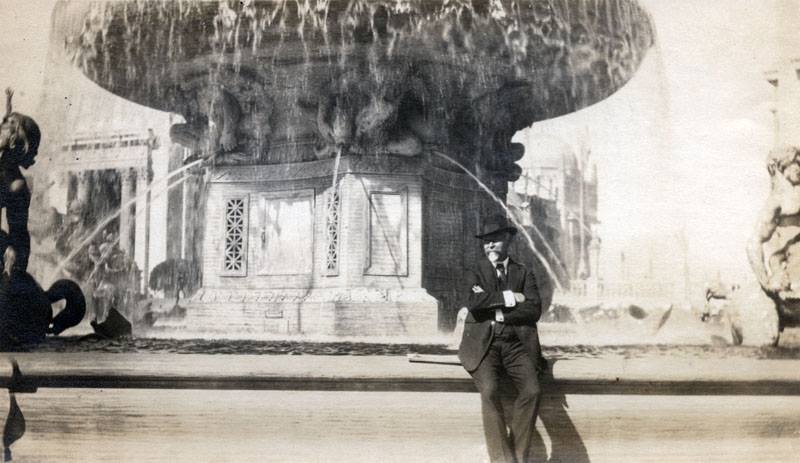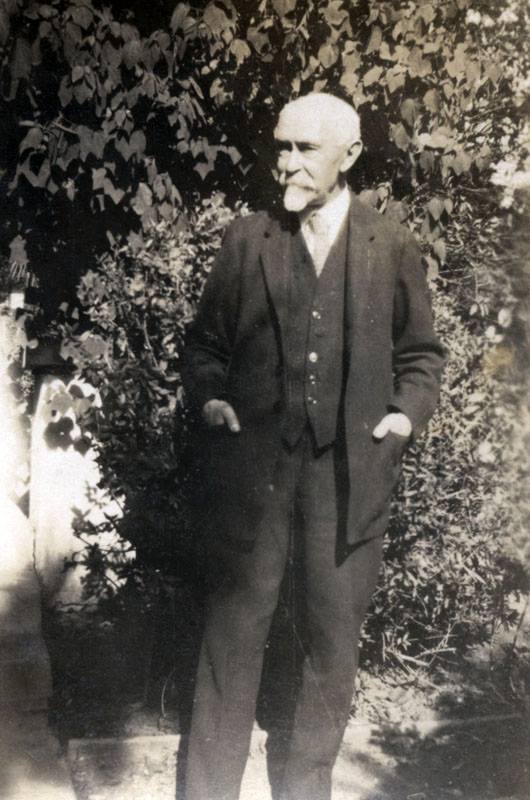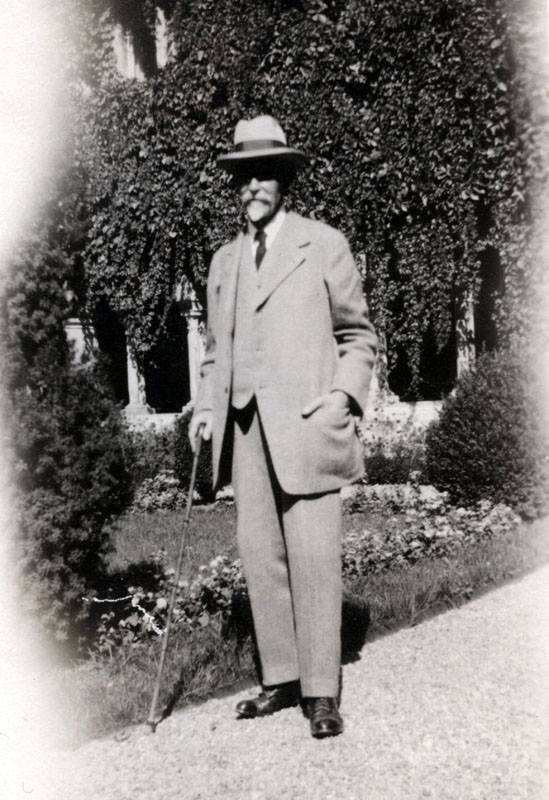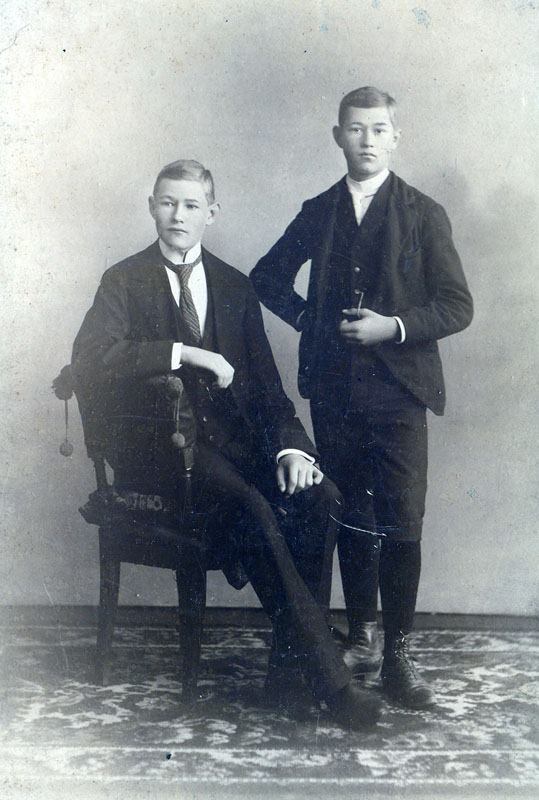Standard History of Kansas
1919
Volume 4 Pages 1975 and 1976
By: William E Connelley
Kansas State Historical Society
Topeka, Kansas
“WILLIAM ROBERT is one of the partners in the X-I ranch. This is one of the famous stock ranches of Southwestern Kansas, and is one of the few that still maintains something like the institutions of the former princely domain over which the lords of the cattle industry herded their stock in the early days. The history of this ranch in Meade County covers a period of over thirty years.
The experiences and relations of William Robert with the cattle industry and with the big cattle men of the southwest go back to even an earlier day. His history recalls a number of the famous cattle kings of a period antedating railroads, barbed wire fences and the other obstacles and conditions that have gradually superseded the old times of ranch and range.
Mr. Robert was born a Danish subject, but was subsequently annexed to the German Empire and was a German citizen when he came to America in early youth. He was born in June, 1854, in Schleswig-Holstein and in the Town of Preetz. That portion of the seacoast country then belonged to Denmark. He was the only son of his parents and his father’s people were prominent bankers. His grandfather established a bank at Preetz in 1821. The nucleus of the bank’s assets at the beginning were funds derived from a church fair. The public soon began depositing and gradually the institution grew until today it has deposits of ten million marks and its home is one of the best banking houses in that section of the country. John E. Robert, father of William Robert, was cashier of the bank for forty-five years. John E. Robert married Agnes Henningsell. Her father was a farmer but her grandfather was Bishop Hansen, head of the Lutheran Church in the Schleswig diocese. Bishop Hansen was born in 1736. His mother was a Miss Lauck, born in 1712. Thus on both sides Mr. William Robert comes from a family of educated and scholarly people.
In 1873 he came to America and passed through New York on his way to join an uncle at St. Louis. He is a man of college education, and though much of his life has been spent in the wilder portions of the Southwest he has always retained the cultivation of a gentleman. From St. Louis he went out to Colorado and at Las Animas worked as clerk for wages with Bartel Brothers & Kilberg. In 1877 he opened a store of his own at Anton Chico, New Mexico. Besides merchandising he also traded in cattle and sheep, and continued business there while the town prospered as a center of freighting and stock raising. With the advent of the railroad the freighting business was abandoned and Mr. Robert exchanged his store for a herd of sheep. He herded these for a few years along the Pecos River. it was a monotonous and ungrateful existence. He camped out with his Mexican herders and sheep, and finally tiring of the life he traded the sheep for cattle, which furnished a more civilized industry.
Mr. Robert deserves mention also as one of the pioneers in the vicinity of Roswell, New Mexico. He entered government land in that region in 1880. At that time the country was dotted with cattle ranches, and he himself aided in developing the “Jinglebob” ranch of the Chisums. The Chisums are one of the most famous names of the ranching industry in the Southwest. One of the most prominent of the Chisums was John S. Chisum. At that time he was known as the cattle king of the West, owning 80,000 head of cattle. Mr. Robert succeeded Mr. Chisum and until 1890 was actively identified with the Jinglebob ranch. While it handled many of the old Longhorn cattle, under Mr. Robert’s management the Shorthorns were developed. Mr. Robert was with the Jinglebob ranch when there was scarcely a wire fence between Roswell and Dodge City. His stock was usually driven to the railroad in Dodge City. He has many incidents to relate of this early period. At one time he personally superintended a shipment of stock by railroad from Dodge City to Kansas City, and when he returned to the former point he found nearly all his cowboys in jail. His men had gone on a spree and had been arrested for violating the peace and dignity of that already notorious town.
In 1890 Mr. Robert brought some of his cattle from New Mexico to the Cimarron River, and became identified with what is now the X-I ranch.
This ranch was established many years ago by J. W. Summers of Keokuk, Iowa, and was operated by McCoy Brothers and Summers for a number of years. It was first known as the X-I-11 ranch. It was exclusively a cattle raising proposition for the production of beef. The limits of the ranch extended south to the Beaver River, embracing lands in both Oklahoma and Kansas. At first the owner of the cattle were satisfied to run their herds upon the public domain. It was only by a gradual process that it developed as a permanent ranch by ownership and leasehold of land. The primary reason for this change was the historic blizzard of 1886, in which thousands of the X-I cattle were lost. About that time the owners began buying out the claims of settlers and setting aside and cultivating certain portions of the land for raising hay and other feed. When Mr. Robert came into partnership with Mr. Summers about 20,000 acres had been acquired. At that time the title of the ranch was changed to the simple form now used, the X-I.
After the death of Mr. Summers, Mr. Robert conducted the ranch alone, leasing his partner’s interest until 1902. At that date H. G. Adams of Maple Hill, Kansas, bought the share of Mr. Summers’ widow and Mr. Robert and Mr. Adams have since been associated. At present the X-I ranch contains approximately 50,000 acres, locating in Seward and Meade counties, in Kansas, and Beaver County, Oklahoma. In recent years the owners have been eliminating much of the poorer grades of stock and concentrating upon the thoroughbred White Faces. It is their plan to breed and grow beef for feeders and finishers, and raise bulls for the big ranches of the western states. The White Face males on the X-I ranch have a high value and are in great demand throughout New Mexico, Arizona, California and Nevada. Blood for blood and point for point, the X-I bulls are regarded as superior to others because of their hardiness and their fitness for western conditions, due to the fact that they are raised largely under the conditions of the open range. Such animals, it has been proved, give better results than those grown under closer and more confined conditions.
Mr. Robert regards the Cimarron River country and the X-I ranch one of the best all-around cattle sections in the United States. The buffalo grass can be depended upon to make meat and growth during the winter, with only the supplement of a little oil cake during the rough weather. While the ranch has proved profitable its management is not content with the old methods. Ditches have been located and constructed for carrying out an extensive plan of irrigation, covering 5,000 acres. In the course of a year or so this area will be put in alfalfa to take the place of the native bottom hay which was almost killed out by the floods of 1914. With this combination of alfalfa and native hay the X-I ranch bids fair to become in a few years one of the most productive sources of beef supply in Western Kansas.
Mr. Robert has regarded himself as an American citizen ever since he landed in this country and he acquired the rights of a naturalized citizen in New Mexico. However, he has never been identified with public affairs though his business is in a sense an undertaking fraught with great value to the welfare of the world. He has always been a student of affairs in the United States and gives his ballot with the intelligence characteristic of a student. His old friends and associates say that his life has largely been regulated by a motto which he adopted many years ago and which is as follows: “Be good, do good, think good, speak good and make good. Then you have not lived in vain.”
Mr. Robert is a well known member of the Kansas Cattle Raisers’ Association, and also belongs to the Texas and National Cattlemen’s Association. He is a director of the Citizens State Bank of Liberal. He is a member of the Masonic Order, belongs to the Kansas Historical Society, and was reared in the Lutheran Church.
While living in New Mexico Mr. Robert married Miss Sallie Chisum, a niece of the John S. Chisum, already referred to. Mr. and Mrs. Robert have two sons, John E. and Fred T. John E. was educated in the public schools of Hutchinson, Kansas took a classical course abroad at Lubeck, Germany, and after his return from Europe pursued special technical work in the Kansas Agricultural College. He is now a prosperous ranchman of Meade County.
John E. Robert married Bessie, a daughter of H. G. Adams, the other partner in the X-I ranch. They have three children, Agnes Bessie, John E., Jr., and Horace Adams.
Fred T. Robert was also educated in the public schools of Hutchinson, Kansas and at Lubeck, Germany, and is now a rancher near Valiant in McCurtain County, Oklahoma. He married Effie Sherman, of Roswell, New Mexico, and they have a son, William Lee.”
This is a verbatim copy from the 1919 “Standard History of Kansas.”
How interesting it is to find that the Adams, Robert and Chisum Families are intertwined through the marriage of John E. and Bess E. (Adams) Robert.
Photo 1 – A photograph of William Robert and Horace Greeley Adams, Sr.
Photo 2 – A photograph of William Robert.
Photo 3 – A photograph of William Robert.
Photo 4 – A photograph of William Robert.
Photo 5 – A photograph of John E. and Fred T. Robert as young
men.
(All photos provided by Brinton Webb Woodward, Robert/Adams descendant.)
